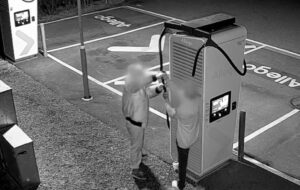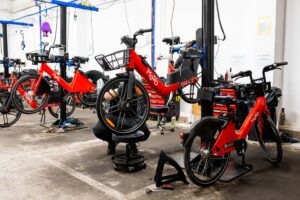The EU has agreed to cut emissions of CO2 from new trucks and lorries by 30% before 2030 which they say will ensure the freight industry starts ‘contributing its share’ to the bloc’s climate goals.
The target was set at an EU Council meeting earlier this week and truck manufacturers who do not comply with the new standards will have to pay a financial penalty in the form of an excess emissions premium.
CO2 emissions from heavy-duty vehicles including lorries, buses and coaches, represent around 6% of total CO2 emissions in the EU and 27% of total road transport CO2 emissions.
In June 2018, the EU Council adopted monitoring and reporting rules of CO2 emissions as well as fuel consumption of new heavy-duty vehicles. However, EU law does not currently set any CO2 reduction requirements for such vehicles, and the EU says the new measures ‘closes a gap’ in environmental legislation.
GraÅ£iela Leocadia Gavrilescu, Romanian Deputy Prime Minister and Minister of the Environment said: ‘For the first time, we are putting in place CO2 emission reduction targets for heavy-duty vehicles. Today’s agreement closes a gap in European environmental legislation.
‘It ensures that the heavy-duty vehicle sector starts contributing its share to our climate goals. We are determined to deliver on the promises which we have made under the Paris Agreement.’
Stef Cornelis, cleaner trucks officer at Transport & Environment, called the new standards ‘excellent news’ for truckers and the environment.
‘After 20 years of very little progress on fuel efficiency, truckmakers now need to start offering affordable, low-carbon trucks, enabling huge fuel savings for Europe’s haulage industry. But this is just a start and the standards will need to be made a lot more ambitious when they are reviewed in 2022,’ he added.
In addition to setting binding targets, EU legislators agreed to strengthen the incentive system for zero- and low-emission vehicles (ZLEVs) in the heavy-duty sector compared to what was proposed by the European Commission. Buses and coaches were originally excluded from the ZLEV system because these vehicle types are already incentivized through other measures.
The new emissions standards still need to be ratified through a vote in the European Parliament and the council hopes this will take place before the end of May.
The provisional agreement reached today requires endorsement by member states. It also needs to be confirmed through a vote by the European Parliament. Once these steps are completed, the formal adoption by the Council can take place – this is likely going to happen by the end of May.
















